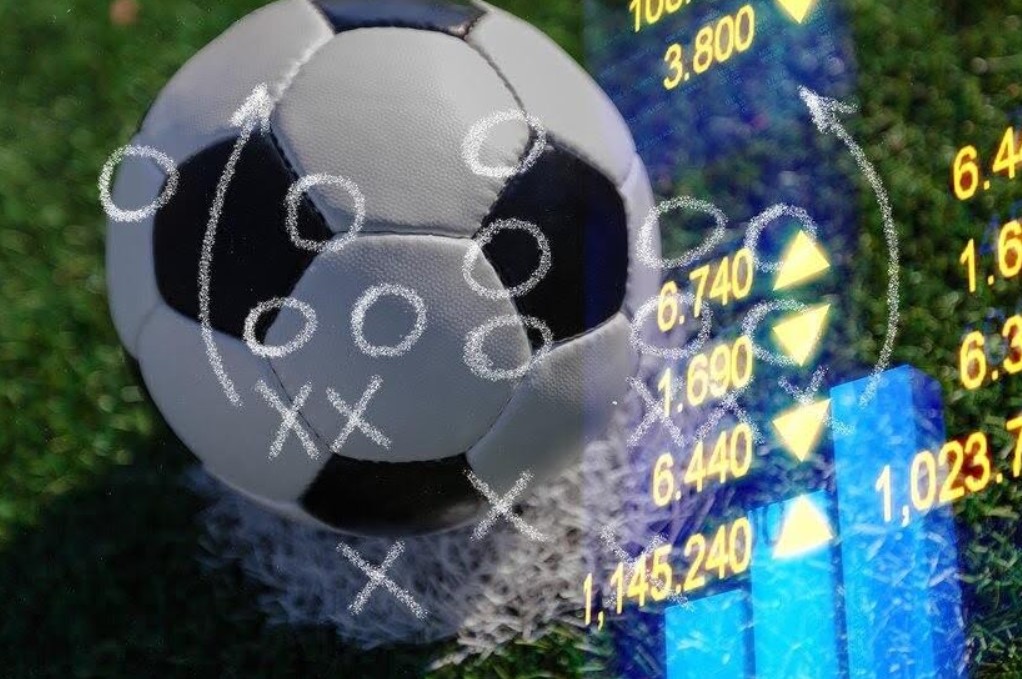4-3-3 vs. 3-4-2-1: Which Formation Dominates Modern Football?
Football never stops evolving. Every few years, tr

Football never stops evolving. Every few years, trends shift, styles change, and tactics get reinvented. Today, two shapes seem to split top coaches: the tried-and-true 4-3-3 and the rising powerhouse 3-4-2-1. Both have depth. Both demand tactical discipline. But each tells a different story on the pitch.
The 4-3-3 has history on its side. The 3-4-2-1? It’s a response to modern football's chaos. Clubs and national teams use these setups to mold their identity. To adapt to opponents. To dominate. One isn’t necessarily better in all cases, but Paripesa Africa bettors and fans alike watch closely which system gains the upper hand.
Let’s break them down. Structure, flexibility, use cases. Who uses what, when, and why.
The Backbone: Formation Structure
Start with the basics. Structure influences everything. The 4-3-3 is direct. Three midfielders control tempo, three forwards stretch the pitch. Full-backs provide width, center-backs hold the line. It’s clean. Balanced. Ideal for pressing high and controlling possession.
Meanwhile, the 3-4-2-1 loads the midfield and uses wing-backs aggressively. Three center-backs form a tight defensive triangle. Two attacking midfielders (the "2") play between the lines, unlocking space. The lone striker acts as a pivot or finisher. It's less linear, more fluid. Less predictable.
Here's a look at the base positioning:
4-3-3
- 4 defenders (usually flat back line)
- 3 midfielders (often a mix: one holder, two box-to-box or advanced)
- 3 forwards (wingers + central striker)
3-4-2-1
- 3 center-backs
- 4 across midfield (including wide wing-backs)
- 2 inside forwards/attacking mids
- 1 striker
On paper, the 4-3-3 looks simpler. But simplicity is its strength. The 3-4-2-1 brings complexity—which is also its edge.
Tactical Flexibility: Adapting on the Fly
Modern football is not about one static plan. The best teams shift gears mid-match. That’s where flexibility matters.
The 4-3-3 can morph quickly. Drop the 6 (holding midfielder) into the back line and it’s suddenly a 3-4-3 in possession. Push full-backs up, and you overload the flanks. Liverpool under Klopp did this to devastating effect.
The 3-4-2-1 is even more fluid. In defense, the wing-backs tuck in to create a 5-4-1. In possession, the two attacking mids pull wide or drift centrally, confusing defenders. It can feel like a 3-2-5 at times. Thomas Tuchel at Chelsea turned this shape into a Champions League-winning setup.
Here’s where it gets real:
Advantages of 4-3-3 Flexibility
- Easy to train and understand
- Great for gegenpressing and transitions
- Wingers stretch defenses naturally
Advantages of 3-4-2-1 Fluidity
- Overloads in central areas
- Wing-backs create width without losing midfield presence
- Shapeshift options: 5-2-3, 3-2-5, or 4-2-3-1 in transition
In tight matches, flexibility often separates winners from runners-up.
Who Uses What: Real-World Examples
Look at elite clubs and national teams. Patterns emerge. The 4-3-3 is still the go-to for many possession-based teams. Think Manchester City, Barcelona, or the Spanish national team. Guardiola’s version blurs lines, but the backbone is pure 4-3-3.
The 3-4-2-1, on the other hand, is the weapon of choice for teams needing compactness and control. Inter Milan under Inzaghi. Germany in recent international fixtures. Chelsea during their Champions League run. It thrives in tournaments, knockout formats, or underdogs needing structure.
Here are three examples of each:
Clubs Favouring 4-3-3:
- Manchester City (fluid build-up, positional dominance)
- Real Madrid (classic wing play with powerful midfield)
- Napoli (quick transitions, wide overloads)
Clubs Favouring 3-4-2-1:
- Chelsea (under Tuchel)
- Inter Milan (tactical discipline and wing-back overloads)
- Brighton (versatile, shape-shifting pressing under De Zerbi)
Each system has its fanbase, both on the touchline and in the stands.
When and Why: Context Shapes Choice
Formations are not one-size-fits-all. Managers don’t pick them in a vacuum. Match context, squad profile, even weather can affect the decision.
4-3-3 shines when:
- You have fast, direct wingers
- Your midfield can press and pass
- You need width and pace to break a block
3-4-2-1 works best when:
- You want defensive stability
- You rely on intelligent attacking mids
- You face teams with strong central control
Managers consider injuries, opponents’ shape, even travel fatigue. A 4-3-3 might make sense in open league play. A tight away leg in Europe? The 3-4-2-1 gives more control.
No formation is a magic trick. It’s a tool. Success depends on execution, not just chalkboard lines.
Key Differences at a Glance
To wrap up this duel, here’s a compact breakdown of their core contrasts. It helps visualize how each setup plays out during a match:
4-3-3
- Emphasis: Width, pace, pressing
- Requires: Energetic full-backs, fluid front line
- Common Pitfall: Exposed if midfield loses shape
3-4-2-1
- Emphasis: Compactness, central overloads
- Requires: Tactical intelligence, high work-rate wing-backs
- Common Pitfall: Isolated striker if mids are neutralized
Each system has a clear identity. But both can win titles if used right.
So...
In today’s game, there is no single "dominant" formation. The real advantage lies in adaptability. Teams that master both 4-3-3 and 3-4-2-1—or can switch between them seamlessly—often pull ahead. Systems matter. But execution, player roles, and in-game management? That’s where matches are won.
So whether you're watching Champions League nights or weekend derbies, pay attention to the shape. It often says more than the scoreline.







